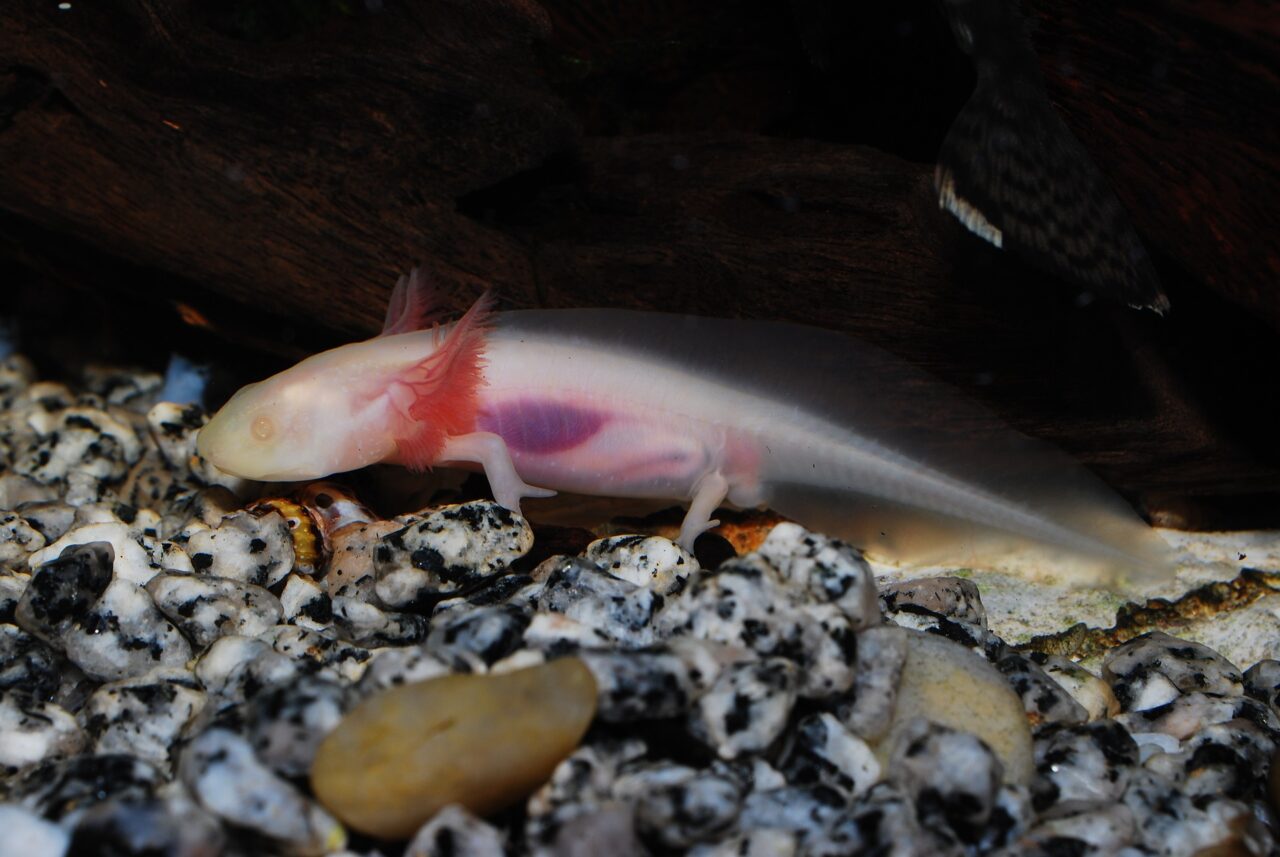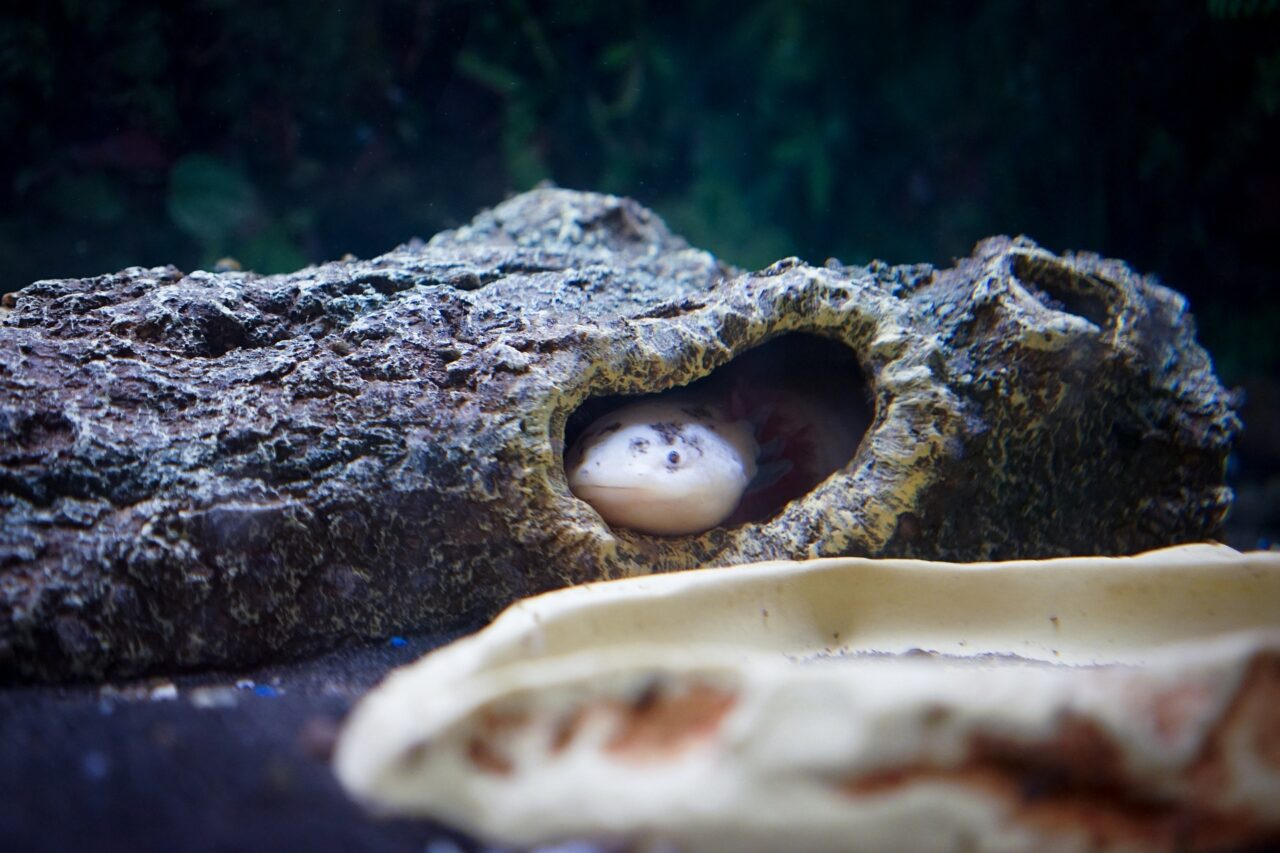What Is The Normal Axolotl Price? Are you captivated by the unique beauty of axolotls and considering bringing one into your life? These intriguing amphibians have gained popularity as exotic pets due to their distinctive appearance and fascinating characteristics. However, before diving into the world of axolotl ownership, it’s essential to understand the factors that contribute to their price.
In this article, we will explore the various aspects of axolotl pricing, including their availability, morphs, age, and where to purchase them. So, let’s embark on a journey to discover the price range of axolotls and the considerations involved in owning these captivating creatures.
With this information, you can make an informed decision about whether or not an axolotl is right for you. You may also want to know what to feed an axolotl.
What are Axolotls?
Axolotls (Ambystoma mexicanum) are a type of neotenic salamander, which means they retain their juvenile characteristics throughout their lives. These aquatic creatures are native to the ancient lakes of Xochimilco and Chalco in Mexico. Known for their striking appearance, axolotls have become sought-after pets and subjects of scientific study due to their regenerative abilities and unique biological traits.
The Fascinating World of Axolotls
Natural Habitat and Behavior
In their natural habitat, axolotls thrive in cool, freshwater environments, such as lakes, canals, and wetlands. They are primarily nocturnal and exhibit a range of behaviors, including hunting, exploring their surroundings, and regenerating lost body parts. Axolotls are also known for their ability to regenerate organs, limbs, and even parts of their central nervous system, making them exceptional creatures with remarkable regenerative powers.

Unique Physical Characteristics
One of the most captivating aspects of axolotls is their unique physical characteristics. They have a sleek and elongated body, with feathery external gills on the sides of their heads. Axolotls come in a variety of colors, including wild type (dark brown or black), golden albino, leucistic (pale pink with some dark spots), and melanoid (all-black). These color variations, along with their distinctive features, contribute to their appeal as pets.
Axolotls as Pets
Choosing the Right Axolotl
When considering an axolotl as a pet, it’s important to choose the right one for your specific preferences and needs. Take into account factors such as the color variation, age, and overall health of the axolotl. If you’re a beginner, it’s advisable to start with a healthy juvenile axolotl, as they are typically more adaptable and easier to care for.
Setting up the Ideal Aquarium
Creating a suitable aquarium environment is crucial for the well-being of your axolotl. Provide a spacious tank with a minimum size of 20 gallons for a single adult axolotl, and additional space for each additional axolotl. Axolotls prefer cooler water temperatures, ideally between 60-68°F (15-20°C). A filtration system and regular water changes are essential to maintain water quality and keep your axolotl healthy.
Feeding and Care
Axolotls are carnivorous and primarily feed on live or frozen foods such as earthworms, bloodworms, brine shrimp, and small aquatic insects. Offer them a varied diet to ensure they receive adequate nutrition. It’s important to monitor their feeding habits and adjust the quantity and frequency of meals accordingly. Regular water quality testing and maintaining appropriate water parameters are vital for their health and well-being.
What Is The Normal Axolotl Price?
Availability and Demand
What Is The Normal Axolotl Price? The availability and demand for axolotls can vary depending on location and the popularity of these creatures as pets. In areas where axolotls are more readily available, their prices may be relatively lower due to higher competition among sellers. However, in regions where axolotls are rarer or in high demand, their prices may be higher.
Morphs and Color Variations
What Is The Normal Axolotl Price? Different axolotl morphs and color variations can significantly impact their prices. Highly sought-after color variations, such as golden albino or leucistic axolotls, tend to be pricier than wild-type axolotls. The rarity and uniqueness of certain color morphs can drive up their market value.
Age and Size
What Is The Normal Axolotl Price? The age and size of an axolotl can also influence its price. Juvenile axolotls are generally more affordable than adults, as they require less space and may not have reached their full coloration or size potential. Larger, more mature axolotls, especially those with desirable characteristics, may command higher prices.
Where to Buy Axolotls
Local Pet Stores and Aquarium Shops
Local pet stores and aquarium shops can be a convenient option for purchasing axolotls. Visit stores that specialize in amphibians or reptiles, as they are more likely to have axolotls available. Ensure that the axolotls are healthy, well-cared for, and kept in suitable tank conditions.

Online Breeders and Marketplaces
Online platforms provide a wide range of options for purchasing axolotls. Reputable breeders and sellers often have websites or listings on reputable marketplaces. When buying online, thoroughly research the seller’s reputation.
Axolotl Rescues and Adoption Centers
Consider checking local axolotl rescues and adoption centers. These organizations often have axolotls available for adoption or rehoming. Adopting from a rescue not only provides a home for a axolotl in need but also supports the important work of animal welfare organizations.
The Cost of Owning an Axolotl
Initial Setup Expenses
Owning an axolotl comes with some initial setup expenses. These may include purchasing a suitable tank, filtration system, heating or cooling equipment, substrate, decorations, and food. The cost of these items can vary depending on the size of the tank and the quality of equipment you choose.
Ongoing Costs and Maintenance
In addition to the initial setup expenses, there are ongoing costs to consider. These include the cost of food, water conditioners, electricity for maintaining the tank’s temperature and filtration system, as well as periodic water testing kits. It’s important to factor in these costs when budgeting for an axolotl.
Ensuring Ethical and Responsible Axolotl Ownership
Proper Research and Education
Before bringing an axolotl into your home, it’s crucial to educate yourself about their care requirements. Learn about their habitat, feeding habits, and common health issues. Proper research and understanding of axolotl care will help ensure you can provide a suitable environment for your pet.
Providing a Suitable Environment
Axolotls have specific environmental needs to thrive. Ensure their tank is set up with appropriate water conditions, including temperature, pH, and ammonia levels. Provide hiding spots and a soft substrate to mimic their natural habitat. Regularly monitor and maintain the tank’s cleanliness and water quality.
Health and Veterinary Care
Routine health care is important for the well-being of your axolotl. Find a qualified exotic pet veterinarian who has experience with amphibians and consult them for regular check-ups and guidance on any health concerns. Be prepared for potential veterinary expenses in case your axolotl requires medical attention.
Conclusion
Owning an axolotl can be a rewarding and fascinating experience. Understanding the factors that contribute to axolotl pricing, such as availability, color variations, and size, will help you make informed decisions when purchasing one. Remember to consider the ongoing costs and responsibilities of providing proper care for your axolotl. With careful research, suitable environment setup, and responsible ownership, you can enjoy the unique beauty and companionship of these captivating amphibians.
FAQs
1. Are axolotls difficult to care for? Axolotls require specific care and attention to ensure their well-being. With proper research and commitment to meeting their environmental and dietary needs, they can be kept successfully as pets.
2. How long do axolotls live? Axolotls have an average lifespan of 10-15 years in captivity, although some individuals have been known to live up to 20 years or more with proper care.
3. Can axolotls be kept with other fish or aquatic pets? Axolotls are generally not recommended to be kept with other fish or small aquatic pets, as they may mistake them for food or stress them out. It’s best to provide them with their own species-specific tank setup.
4. What size tank is suitable for an axolotl? A single axolotl should have a minimum tank size of 20 gallons, with additional space for each additional axolotl. A larger tank with ample swimming space is always beneficial for their well-being.